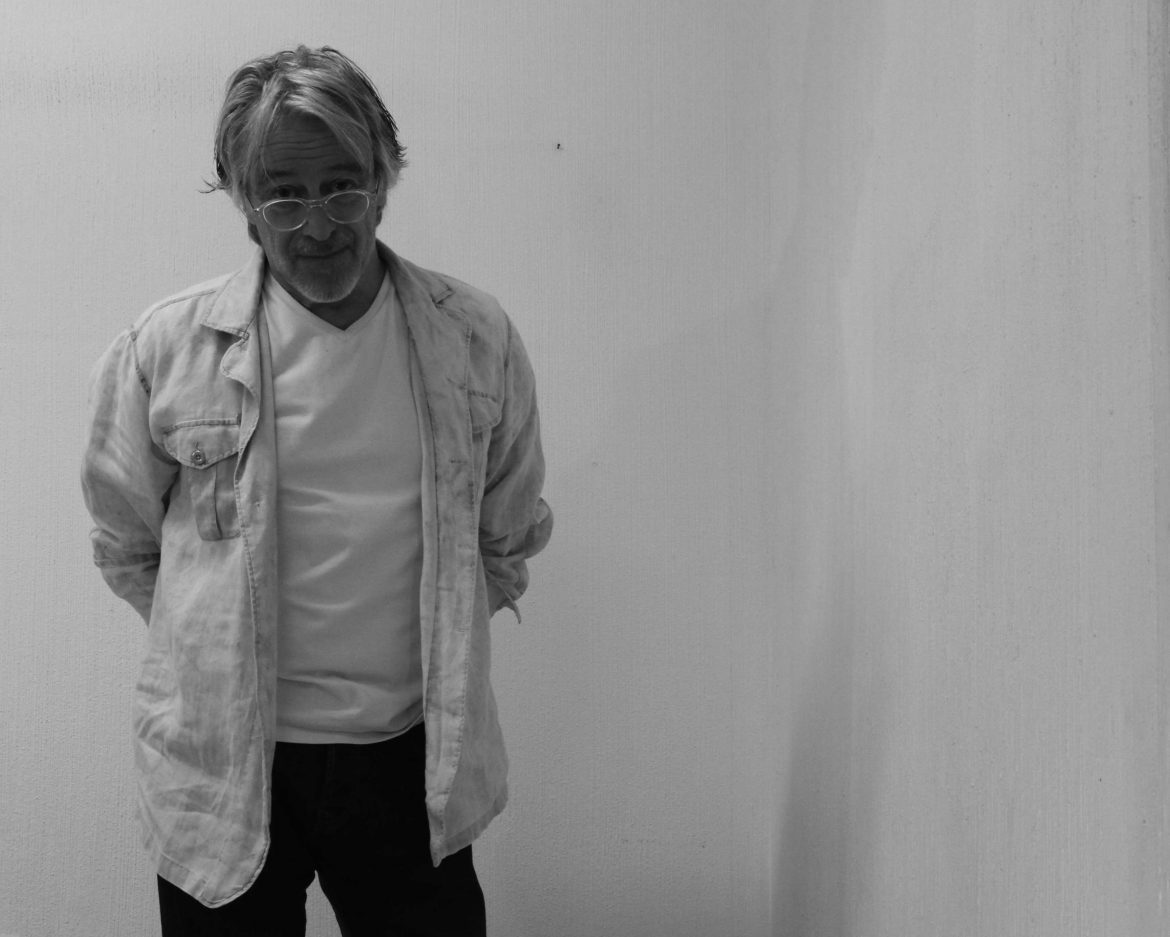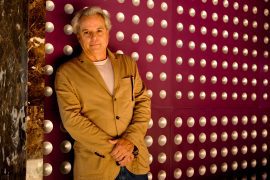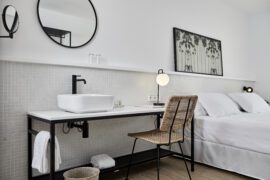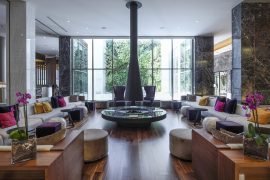There has been a very clear trend in architecture and interior design in recent years: materials are returning to the spotlight and becoming key elements when planning the design of a piece or a room.
The materials seduce and shine on their own, without any adornment or decorative excess. If, on top of that, they are natural elements like stone or wood, the result is highly evocative.
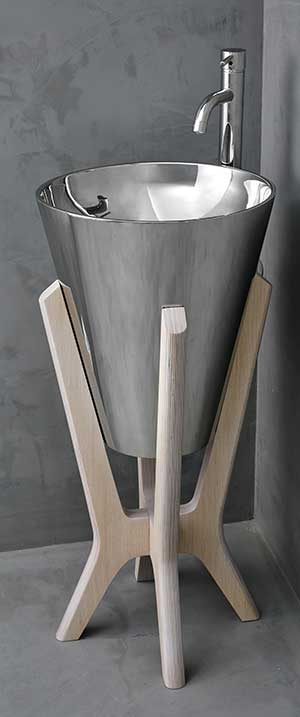 The intention of the designer when planning the construction of a piece, or of the interior designer when planning the layout of a room, is precisely to highlight and emphasise the natural textures and forms of these materials. To do so, they use extremely harmonious designs that seek to accompany or embrace this raw material that makes a big splash in the room while, at the same time, lending harmony and balance.
The intention of the designer when planning the construction of a piece, or of the interior designer when planning the layout of a room, is precisely to highlight and emphasise the natural textures and forms of these materials. To do so, they use extremely harmonious designs that seek to accompany or embrace this raw material that makes a big splash in the room while, at the same time, lending harmony and balance.
This trend is not incompatible with sophistication or luxury. In fact, metallic touches or materials often add an air of glamour and sophistication to a room. Steel, aluminium, or finishes ranging from gold to silver become the focus in a room.
We talk to Pascual Salvador, a renowned architect and industrial designer who has made a name for himself in the world of product development and is on the boards of various prestigious design associations, including ADI-FAD, BEDA and ADP.
From his studios in Mexico and Barcelona, he works with leading Spanish and international design firms. Among them, Bathco, with which he has worked shoulder to shoulder for years in the development of products linked to the world of bathrooms. Some of his most recent designs can be found in the general catalogue: the Munich and Bonn faucets, the reproduction of the bathrooms on the Titanic, Relief, etc.
His most recent work for Bathco will be presented at Cevisama 2017, and the standout products have a common denominator: the protagonism of the material.
Describe the creative process followed in your Barcelona and Mexico studios, is it conceptual or formal?
Each project emerges from an intuition that invariably comes through one of these two paths, conceptualisation based on functionality and innovation, or creativity that appears in a burst of intuition regarding forms, textures or materials. From there, an essential ability to try to combine the two concepts comes into play in a context where, if linking the two is possible, then I am looking at a process that very probably will be the first step towards integrating all the requirements that a product must have.
What peculiarities or aspects must be taken into account when designing a product for the bathroom, like a cabinet or a washbasin?
Being realistic, I think that, as in any project, it is a process of seduction through functionality. At the same time, considering the aesthetic emotionality of an object that is going to live in our midst, it is important that the day-to-day use continually confirm its functionality and that it maintain this emotional complicity that had an impact on us from the first moment. Time and the relationship with it will tell us if it is a good product. It is essential for designers to ensure that their proposition is aimed at creating a more comfortable environment, one that is more respectful and that helps over time to evolve in our culture and in our quality of life.
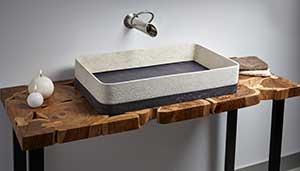 Stone Series expands its catalogue with a family of stone washbasins notable for the thinness of their walls. What is the process of creation for a piece of this type?
Stone Series expands its catalogue with a family of stone washbasins notable for the thinness of their walls. What is the process of creation for a piece of this type?
Stone, as any material or any of us, has its own personality. You have to know how to handle it, and it is thrilling to investigate how far we can go in discovering new possibilities. In this case, achieving profiles determined by their visual lightness without losing their characteristics required a laborious process, and there you have the final result.
If there is something that characterises Solid Surface, it is its capacity for being moulded and for creating different pieces. What differentiates the new products from the old ones?
It’s always fascinating to have the possibility of getting involved with new products like Solid Surface, where we find innovative technology with new possibilities for applying shapes and concepts with unexpected finishes. But at the same time, working from their singular characteristics becomes a challenge.
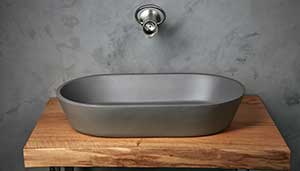 How does a material like cement or terrazo influence you when designing new pieces?
How does a material like cement or terrazo influence you when designing new pieces?
I think there is a cultural quality of the materials and that we have to try to exploit their possibilities. Cement and terrazo are two good examples of this, where very interesting applications can arise. Attempting to resolve this has been a very satisfying experience conceptually.
A proposition that we are increasingly seeing in the world of interior design is zinc applied to the bathroom in the form of a washbasin. What do these types of pieces offer, both aesthetically and technically?
This is an idea that goes much farther than the materials we could consider “traditional” for a washbasin collection, something new, where I try to bring together the new forms of aesthetic concept and the materials. You just have to walk down the street to see where the aesthetic criteria are going. Would we have believed a few years ago that a major portion of personal aesthetics today would be based on tattoos and wearing tight garments that are literally torn at the knee? I imagine many tattoos will be in contact with these new products every day.


